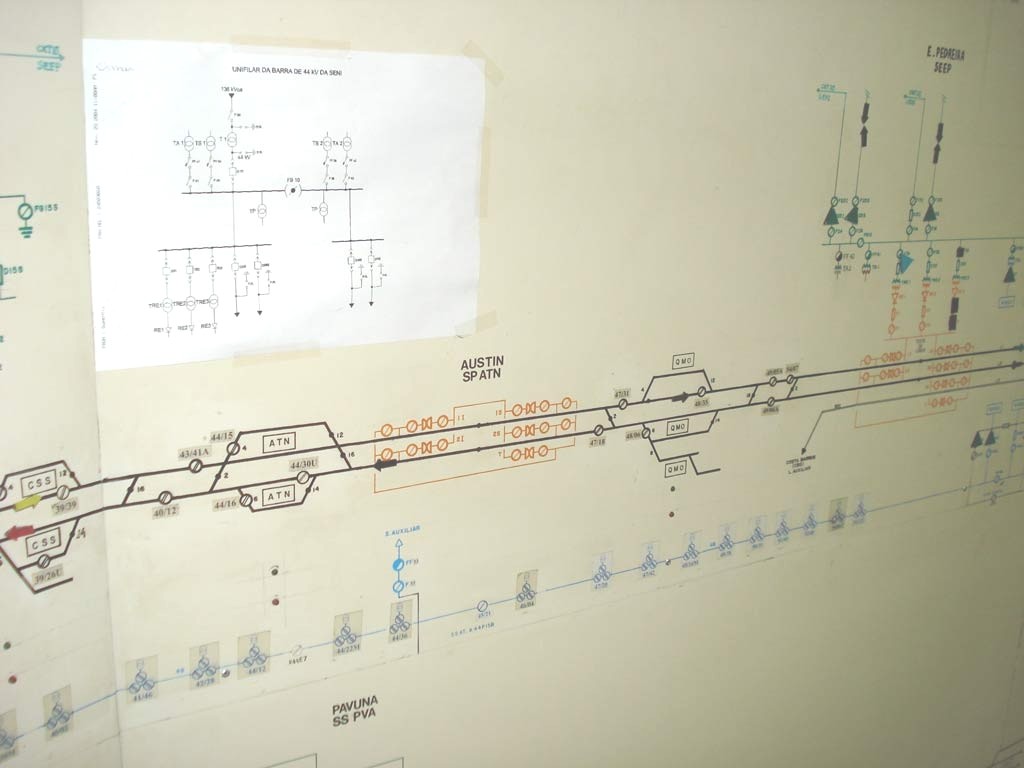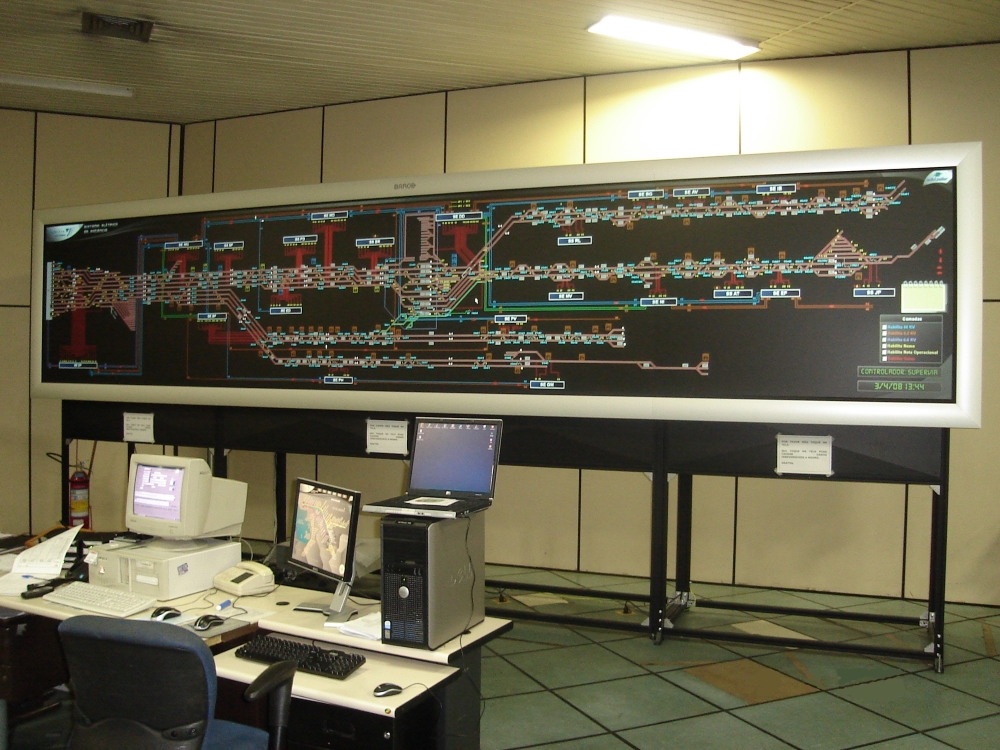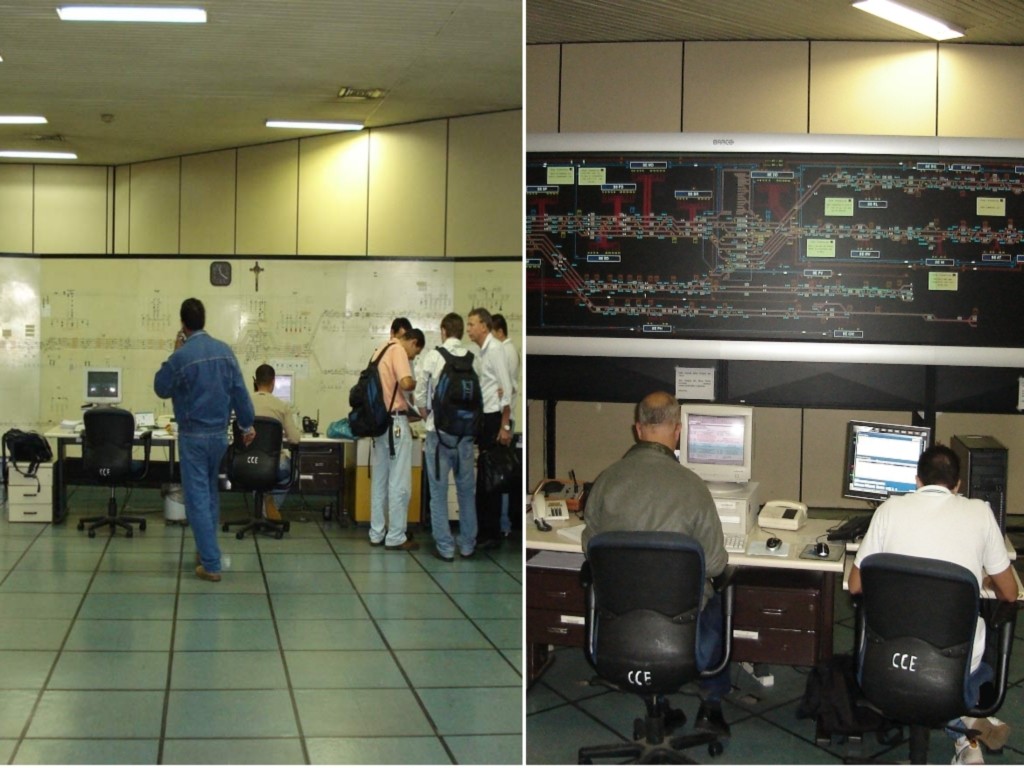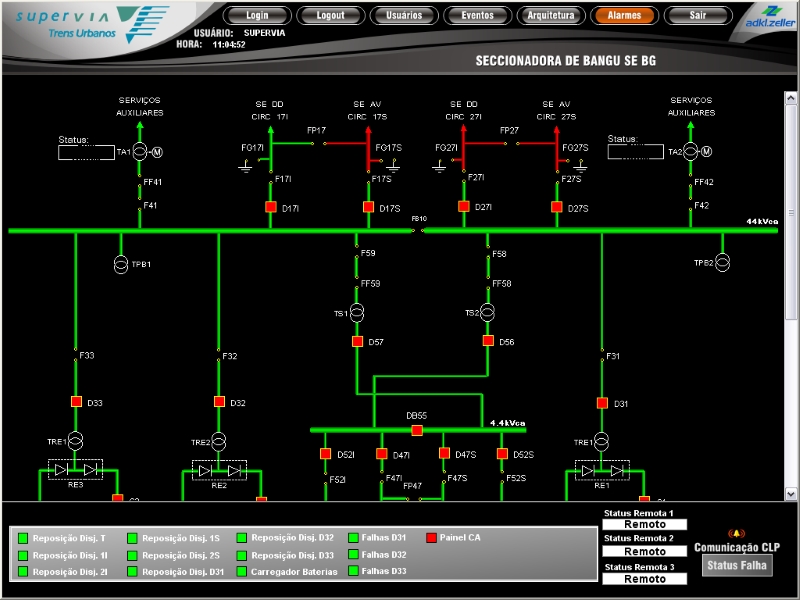Elipse E3 application in Rio de Janeiro’s rail transportation power system
This case presents an E3 application developed to automate substations and other components integrating the power grid of Rio de Janeiro’s rail transportation system

Needs
SuperVia is the rail transportation in the metropolitan area of Rio de Janeiro, serving 11 different cities and around ten million passengers per month. Its commuter lines run throughout 225 kilometers around both residential and commercial areas of this important production and development in Brazil.
Before E3, all substations and components comprising SuperVia’s power system were locally monitored by using a telephone and a large ferromagnetic board. On this board, a chart representing the power system was used for the controllers’ reference; these controllers then used small magnets to register the railroad’s power system set-up.
With these tools, this is how control was performed: whenever a problem was detected in the system, the operator next to that substation would call the controller in charge. From the Power Control Center (PCC), the controller would, still via telephone, instruct the operator on the proper course of action for that occurrence.
That meant that the operator was the de facto “controller” of alerts and problem resolution in the system. As for system controllers, not only did they have to accept the diagnostic made by the operators blindly, but also had to trust their commands would be properly executed by them.
To change this scenario, SuperVia, with the help of ADKL Zeller Eletro Sistemas LTDA, has implemented E3, the SCADA (Supervisory Control and Data Acquisition) supervisory developed by Elipse Software. Their goal was to install a solution that could supervise, in a completely automated way, Rio de Janeiro’s commuter train’s power system.
In other words, the system needed a software package that would guarantee a safer, more agile response to any occurrences. Altogether, SuperVia is now working with three E3 copies: one Server (E3 Viewer Control), and two Viewers (E3 Viewer Only), all of them installed in the company’s PCC.
Solution
Unlike in the previous scenario, the new E3-based system makes the railroad’s power network control easier, faster, and more dependable. The first major change at the PCC was the replacement of the old ferromagnetic board by the “Boat Panel”, a six-meter large, two-meter long electronic panel running E3 Viewer Only.
With this new panel, the controllers can check the entire railroad’s power system from their desks, closely monitoring each station’s behavior, with no need to call operators or go to the event’s site personally. Thus, they are able to supervise the behavior of a whole network with no need of input from operators.
However, actions are as important as system visualization in this case: in addition to the new panel, SuperVia also has four interconnected computers. One of them works as the system server, with E3 Server and E3 Viewer Control copies, hence making it possible to run commands from any of these machines, since they are all running the same application.
It should be pointed out that the installation of the railroad’s power network monitoring and control system was performed in sequence, i.e., one substation at the time. To control each one of these substations, a complete infrastructure was required to get round the long distances between them, with the use of optic fiber converters and radio, among others.
Functionality
According to Eduardo Luiz dos Santos Limoeiro, ADKL’s manager of automation system and one of the people in charge of the application, E3 has made it possible for operators to visualize the complete railroad, all substations included, as well as to acknowledge the presence of any events in the system from the computers installed in the PCC.
With E3, system protection is also pivotal: it is possible to perform different actions, such as switching circuit breakers on and off according to the sector’s needs, whether it is by isolating or energizing the selected space on the railroad through a simple click.
“For instance, imagine there is a short circuit at a given point on the line. In such cases, we can isolate the affected area until it has been repaired, thus protecting the rest of the system”, said the manager.

Figure 4. E3 screen displaying circuit breakers status at Penha substation, in Rio de Janeiro. Green, open. Red, closed
To Limoeiro, the great differential brought by E3 to the railroad’s power network monitoring and control system is summarized as “dynamism, speed, and operational flexibility”. This differential is directly connected to the software’s great agility in both detecting several occurrences (via alarms), and solving them afterwards.
Felipe Winter, the ADKL’s developer who helped implement the software, points to another resource present in E3: the control of six tension sectionalizer substations. Just like rectifier stations, these facilities are responsible for the sectionalizing and parallelism of energy on the railroad. However, there is one difference: instead of receiving energy from a provider, they are energized by the railroad’s own substations.
Among other functionalities available in the software, Winter also points out the dynamism related to faster responses.
“Suppose a breaker is disarmed. If the substations still used the old system, the breaker would only be armed after operator and controller exchanged information. With E3, on the other hand, this communication is no longer necessary, since the controller not only sees the problem, but also solves it from the central station”, he ponders.
According to Winter, before E3, around 70 operators were forced to work in substations to check for the smallest glitches in the system, a scenario that has completely changed lately: it is now totally automatic.
“Actually, controllers were not able to view what was happening on the line before the introduction of this software. Now, with E3, controllers have an instant grasp of all visual elements in system control, like, for instance, the colors on the panel: “green” means “off”, “red” means “on”. This means they are now more aware of the conditions in the system than they ever were”, he says.
Finally, controllers can now check for details in any event executed in the past and study the procedures then taken for a certain occurrence, in order to verify its causes, or even learn how to proceed in this kind of situation.
Benefits
- Complete visualization of a total amount of 21 substations in Rio de Janeiro’s railroad via Boat Panel.
- Easy status monitoring of each breaker and sectionalizer key on the line’s power system (green = off; red = on).
- Almost immediate responses to any events.
- Complete automation of the system, making the ferromagnetic board with magnets obsolete.
- Effective follow-up of all elements comprising the line’s power system by the controllers, making the presence of an operator at the occurrence’s site redundant.
- Freedom of action to isolate or energize part of the line’s power system in case of overload, power cut, or short circuit.
- Query of details regarding any course of action taken in past events.
Final Remarks
For the controller Júlio César Diniz, E3’s implementation has greatly improved the system.
“This software has been a great help. Thanks to telecommand, we now get the information on our monitors and on the electronic panel, via alarms, at the exact time the event occurs. We don’t have to wait for the operator’s call anymore to solve this problem”, he says.
According to Diniz, the substations are now totally closed, isolated from any system controller or operator; this new reality was made possible because of complete system automation.
“The greatest benefit brought by E3 to our system was agility: agility for monitoring occurrences, agility for executing commands to solve problems”, he adds.
According to Osmar de Araújo Nobrega, the coordinator of SuperVia’s traffic signs, telecommunications, aerial network, and substations, E3 also allows operators to have a broad view of the system. This has made control of the 225 kilometers of Rio de Janeiro’s railroad much easier.
“Transmission lines are all interconnected, and when a breaker is turned off, there is a corresponding breaker in another station that needs to be attended, sometimes as far as four or even eight kilometers away from there. In such cases, it’s an advantage being able to visualize the whole system in order to decide on the best course of action”, points out the coordinator.
Another positive point when using Elipse’s software, according to Nobrega, is the possibility of operating the system remotely.
“The system’s diagram was planned to give us the broadest possible control of the network. Now, we are able to visualize all events by simply using the electronic panel and the four monitors installed in the PCC”, he says.
“And finally, let’s not forget that our PCC is currently being remodeled. In the future, the result will have an even greater impact”, promised Nobrega.
Datasheet
Client: SuperVia
Integrator: ADKL Zeller Eletro Sistemas LTDA.
Software: Elipse E3
Number of copies: 1
Platforms: Windows XP, Elipse 2.5, and Oracle
Number of I/O points: 2.305
I/O Driver: Modbus




